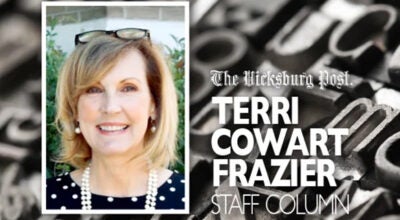One historic mother of a tale
Published 9:43 am Thursday, May 7, 2015
As the men from Warren County were marching through Virginia, the seeds of Mother’s Day were being planted.
About the same time the 21st Mississippi Infantry arrived, Ann Marie Reeves Jarvis and her group of volunteers known as Mothers Day Work Clubs had set up shop as nurses in Taylor County, Virginia. Jarvis and the ladies of the club nursed soldiers in both blue and gray. I don’t know if any of the men of the 21st ever saw their work first hand, but all of their descendants — every American really — in a way was touched by Jarvis’ work.
Taylor County, in what later became West Virginia, was the terminus of the Grafton Railroad and was wanted badly by both Union and Confederate forces. Army camps from both sides sprang up quickly in 1861.
Typhoid fever and measles soon broke out in the military camps. Jarvis and the Mothers Day Work Clubs were called to help.
“You shall have it. No mistreatment of any of our members. We are composed of both the Blue and the Gray,” she wrote.
After the war, Jarvis helped organize a major Civil War reunion in Virginia between Union and Confederate veterans. During what was called Mothers Friendship Days. Jarvis appeared at the event wearing a gray dress while another member of the Mothers Day Work Clubs wore a blue dress. Someone sang “The Star Spangled Banner” while another woman sang “Dixie.”
It was yet another effort at healing a country still deeply divided by the effects of the war.
While not volunteering, Ann was the mother of 11 children, but only four lived into adulthood. She was also active in civil and church affairs. She died on the second Sunday of May, 1905.
Her daughter, Anna, resolved to honor her memory. Anna had no children, but in 1907 began a push for a National Mother’s Day Holiday. The first celebration was held on the second anniversary of her mother’s death at Andrews Methodist Church in Philadelphia. By 1908, the entire city was celebrating Mother’s Day.
In 1914, President Woodrow Wilson declared Mother’s Day a national holiday. Anna was overjoyed, but grew to despise the commercialism associated with it.
“A printed card means nothing except that you are too lazy to write to the woman who has done more for you than anyone in the world,” she said. “And candy! You take a box to mother — and then eat most of it yourself. A pretty sentiment!”




